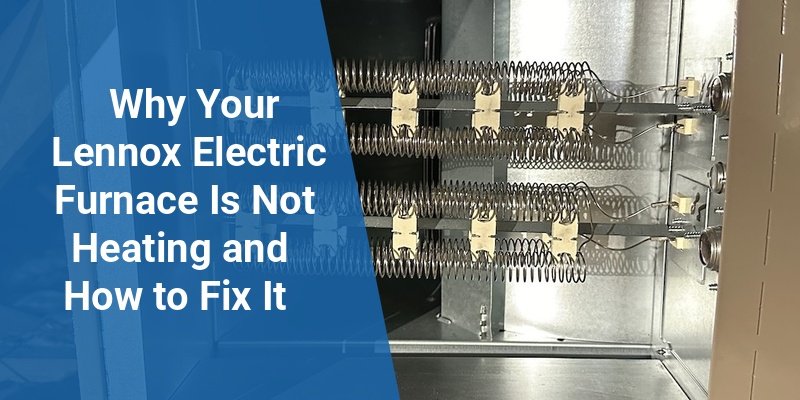A Lennox electric furnace not heating can be frustrating, especially during cold seasons. This issue may stem from various causes ranging from simple thermostat problems to complex electrical faults. Identifying the underlying issue promptly ensures safety and restores warmth efficiently. This article provides an in-depth exploration of common reasons for heating failure in Lennox electric furnaces, troubleshooting tips, and when to seek professional repair.
| Common Causes | Symptoms | Basic Solutions |
|---|---|---|
| Thermostat Issues | No heat despite furnace running | Check settings, replace batteries, recalibrate |
| Blown Fuses or Tripped Breakers | Complete or partial power loss | Reset breakers, replace fuses |
| Faulty Heating Elements | Furnace runs but no heat output | Test and replace heating elements |
| Control Board Malfunctions | Erratic operation, furnace won’t ignite | Professional diagnosis and replacement |
| Blocked Air Filters | Reduced airflow, overheating | Clean or replace filters regularly |
Common Reasons a Lennox Electric Furnace May Not Heat
Lennox electric furnace heating failures often originate from electrical or mechanical issues. The thermostat is frequently the first point of failure. If its settings are incorrect or batteries are dead, the furnace won’t receive the signal to heat. Additionally, blown fuses or tripped circuit breakers can cut power to critical components, causing the furnace to run without producing heat.
Another major cause is faulty heating elements. Over time, heating coils can burn out and require replacement. Control boards also play a vital role; if they malfunction, they fail to regulate heating cycles properly. Lastly, clogged or dirty air filters reduce airflow and trigger safety switches, preventing heating to avoid damage.
Troubleshooting Your Lennox Electric Furnace Heating Problem
Check the Thermostat Settings
Ensure the thermostat is set to “Heat” and the temperature is higher than the current room temperature. Replace thermostat batteries annually or as needed. If the thermostat appears unresponsive, recalibrate or replace it. This quick check often resolves simple ignition failures.
Inspect Fuses and Circuit Breakers
Locate the furnace’s dedicated breaker panel. Reset any tripped breakers by switching them off and on. Replace any blown fuses with identical types and ratings. Be cautious when working with electrical components and turn off power before inspecting.
Test Heating Elements
Heating elements can be evaluated using a multimeter to check for continuity. Elements without continuity must be replaced to restore heating function. Replacement involves removing the access panel and disconnecting the old coil.
Examine the Furnace Control Board
If other components function but the furnace still fails to heat, the control board might be faulty. Diagnosing this requires testing electrical signals with specialized equipment. It is advisable to hire a licensed HVAC technician for this critical step, as control board replacement involves complex steps.
Call 888-906-9139 for Free Local HVAC Quotes – No Obligation, Just Savings!
Replace or Clean Air Filters
Dirty filters restrict airflow, leading to overheating and automatic shutdowns. Replace filters every 1-3 months or clean reusable filters according to manufacturer instructions. Maintaining clean filters ensures efficient furnace operation and prolonged equipment life.
Additional Factors Affecting Furnace Heating Performance
Power Supply Issues
Ensure the furnace is properly plugged in and receiving consistent power. Voltage fluctuations or loose wiring connections can cause intermittent heating problems. Regular electrical inspections help prevent such failures.
Limit Switch and Safety Controls
Limit switches monitor furnace temperature and shut off heating if overheating is detected. If faulty, they can falsely prevent the furnace from heating. Testing and replacing defective limit switches are important for safe furnace operation.
Blower Motor Functionality
A blower motor circulating air is essential for heat distribution. If the motor fails or its capacitor is faulty, heat may be generated but not distributed effectively. Listen for unusual noises and inspect motor components to ensure proper function.
When to Call a Professional HVAC Technician
While many troubleshooting steps can be performed by knowledgeable homeowners, some issues require professional expertise. Complex electrical diagnostics, control board replacements, and refrigerant or sealed system repairs should be handled by certified HVAC technicians. Attempting advanced repairs without proper knowledge can risk safety and further damage.
Routine professional maintenance is recommended annually to keep furnaces like Lennox models operating at peak efficiency. This proactive care minimizes sudden heating failures and extends furnace lifespan.
Maintenance Tips to Prevent Lennox Furnace Heating Failures
- Regularly change air filters every 1-3 months depending on usage and environment.
- Schedule annual professional inspections to identify components showing wear or malfunction.
- Keep the thermostat clean and calibrated to avoid incorrect readings or operation failures.
- Ensure electrical panels and wiring are secure and free from damage.
- Clean furnace vents and ducts to improve airflow and heating efficiency.
- Monitor unusual furnace noises or odors that could signal internal issues needing immediate attention.
Understanding Lennox Electric Furnace Models and Features
Lennox offers various electric furnace models designed for energy efficiency and comfort. Features such as multi-speed blowers, advanced control boards, and diagnostic displays facilitate troubleshooting and optimize heating cycles. Familiarity with your specific model’s manual and features aids in effective problem identification and communication with repair professionals.
Call 888-906-9139 for Free Local HVAC Quotes – No Obligation, Just Savings!
Many models use electric heating elements arranged in stages, providing modulated heating to minimize energy usage. This means heating issues might affect only one stage, causing partial heating problems.
Energy Efficiency and Cost Considerations
A malfunctioning Lennox electric furnace not only compromises comfort but also increases energy consumption due to inefficient operation. Replacing defective parts promptly helps reduce utility bills. Lennox systems known for high efficiency benefit greatly from proper maintenance, optimizing energy use while maintaining desired indoor temperatures.
In some cases, upgrading to a newer furnace model with enhanced technology may present long-term savings despite initial investment costs.
